Kalamkari trends have swept through the fashion and art world both in India and abroad. From intricate paintings to elegant sarees, kurtis, and mesmerizing home decor, Kalamkari has etched its legacy across the globe. While many are familiar with the renowned Srikalahasti and Masulipatnam forms, the lesser-known Karuppur Kalamkari from Thanjavur and Gujarat's Maata ni Pachedi have also left indelible marks. However, behind these breathtaking creations lie the unsung heroes—the master artisans of Kalamkari. This article unveils the talent and stories of five exceptional artisans who deserve recognition for their extraordinary contributions to this revered and renowned art form:
1. Niranjan Jobbalgadda, Srikalahasti Kalamkari artist
The pilgrimage town of Srikalahasti is known worldwide for its Kalamkari fabrics. Diligently handpainted with bamboo or date palm sticks called qalams, the intricate designs of Srikalahasti are painted by skilled artisans like Mr Niranjan Jonnalagadda. Niranjan Jonnalagadda, born in 1967, is a renowned artist known for his exceptional talent and skill. Recognized as one of India's most celebrated masters of Kalamkari craft, Jonnalagadda Niranjan is a fourth-generation artist who learned the art form through observation from his father, the esteemed Padma Shri Guruappa Chetty. During his father's time, his father was the sole practitioner of the Srikalahasti Kalamkari craft, responsible for training aspiring artists and revitalizing this traditional art form. Presently, over two hundred artists are involved in preserving this rich heritage, with Niranjan leading the way.
As an acclaimed Srikalahasti Kalamkari artist, Mr Niranjan expertly combines contemporary designs with traditional techniques. With four decades of experience in Kalamkari, his passion for this craft began in his childhood, where he received training and developed a keen interest in creating intricate Tree of Life designs. His exceptional work has made Kalamkari synonymous with these delicate depictions.
To perfect the postures and movements of his figures, Mr Niranjan even studied classical dancing. Moreover, he avidly captures the unique and unexpected themes of temple carvings by photographing numerous temples. He and his family are also well-versed in mythological scriptures and narratives, as Kalamkari has always been a family tradition. Thus, all family members had to immerse themselves in scriptures and legends before mastering the art. Today, Mr Niranjan shares his invaluable knowledge and expertise by teaching this generational art form at the Kalamkari Research and Training Centre.

2. Pitchuka Srinivas, a Pendana Kalamkari artist
In a workshop in Pedana, Andhra Pradesh, cotton fabrics are immersed in vibrant natural colours obtained from boiling pomegranate peels in copper cauldrons. Skilled artisans diligently press handmade wooden blocks onto the cloth with remarkable precision, creating intricate patterns. Once finished, the fabric is set aside to dry, showcasing the meticulous artistry involved in Kalamkari. Leading this mastery of Pendana Kalamkar is Pitchuka Srinivas, a second-generation artist who has honed his craft to perfection. Mr Srinivas's journey began within a family deeply rooted in traditional weaving. When his father, Mr Pitchuka Veera Subbaiah, discovered the Pedana Kalamkari, he ventured out to Machilipatnam in search of ancient handmade blocks, embarking on Kalamkari experiments in the 1970s.
With unwavering determination, Mr Srinivas embraced his family's traditional craft and remained steadfast in preserving its authentic essence. His commitment to using natural vegetable dyes, intricate wooden blocks, and traditional block printing methods sets him apart from the prevalence of chemical dyes and screen-printed Kalamkari products. Together with his son, Pitchuka Veera Naga Varun Kumar, and a skilled team of 20 artisans, they create exclusively block-printed Kalamkari pieces. Each artisan's expertise allows them to block print approximately 30 meters of fabric per day, sustaining their family craft and providing livelihoods to the weaver community in Pendana.
Mr Srinivas's Kalamkari paintings have garnered acclaim both in India and overseas. His masterpiece, an awe-inspiring 'Tree of Life' painting, showcases his artistry with an astonishing 212 blocks—far surpassing the usual 15-20 blocks used in typical prints. His exceptional talent caught the attention of designer Mary Bergtold Mulcahy, resulting in a partnership that brought his enchanting floral, vine, and boteh jegheh (Persian motif commonly known as paisley) prints to the renowned Les Indiennes store in New York.
Closer to home, Mr Srinivas has joined forces with the handicrafts and handloom e-tailer iTokri, where he showcases and sells an array of Kalamkari sarees, dupattas, running fabrics, paintings, bags, masks, and more. In an era where environmental consciousness prevails, the demand for his chemical-free, naturally crafted products continues to soar, often surpassing the capacity of his dedicated team.
While honouring tradition, the family also recognizes the importance of preserving history. The blocks used in Pendana Kalamkari since Mr Srinivas's father's time have been lovingly maintained and are now showcased in the Pedana Kalamkari Museum. This iconic museum, established by Mr Srinivas in 2018, serves as a repository of Pendana Kalamkari art, a window into the past, and an inspiration for future generations and curious visitors alike. Among its treasures is Mr Srinivas's iconic Tree of Life painting, a captivating embodiment of his passion and artistry.
For his outstanding contributions to the crafting, preservation, and promotion of Pendana Kalamkari, Mr Srinivas's talents and dedication were recognized and honoured with the prestigious Dr Y.S.R. Achievement Award in fine arts and culture. Through his unwavering commitment to his traditional craft, Pitchuka Srinivas breathes life into the extraordinary world of Pendana Kalamkari, carrying its legacy forward and inspiring future generations to embrace this captivating art form.

3. Sanjay Chittara, Mata ni Pacchedi (Gujarati Kalamkari) artist
What started as an artistic movement 3000 years ago by the nomadic Vaghari community against the temple ban to fight the oppressive caste system turned into the religious art of Maata ni Pachedi (backdrop of the mother goddess). It is a unique handpainted and block-printed textile tradition of Kalamkari practised by the Chitara family that explores the different forms of goddesses and their stories. Among the last remaining families preserving this traditional craft is the remarkable artist, Sanjay Manubhai Chitara, born in 1978.
Immersed in the art world from a young age, Sanjay Chitara began honing his skills at 15, learning the intricate techniques passed down by his father. However, Sanjay aspires to breathe new life into this textile tradition in the realm of sacred art.
Through refined brushwork, meticulous attention to detail, and an expanded natural colour palette, Sanjay Chitara's works have represented the sacred spaces of excluded communities in the drawing rooms and museums of the urban world, captivating audiences with their beauty and narrative power. Departing from the traditional maroon and black hues derived from oxidized iron and palm sugar, Sanjay fearlessly experiments with turmeric, henna, indigo, and an array of natural materials to craft a diverse range of captivating colours like pink, yellow, green, and blue. Yet he still uses ancient methods of extracting colours naturally.
As a contemporary artist navigating the path of tradition, Sanjay Chitara embraces constant evolution. He fearlessly explores new formats while staying true to his distinctive style. In a testament to his skill and versatility, he ventured to Kolkata during the Durga Puja festival of 2017 to paint and adorn a puja pandal—a magnificent shrine dedicated to the goddess, constructed annually for worship and celebration.
Sanjay's artistic prowess has garnered recognition both in India and internationally. His works have been showcased in esteemed exhibitions, including Spic Macay in Mumbai, the Devi Art Foundation in Delhi, and the Hat Project in the United Kingdom. In acknowledgement of his remarkable talent, he was honoured with the Gujarat State Award in 1999 and a National Award in 2000, solidifying his place as a celebrated artist within the realm of Gujarat's form of Kalamkari.

4. K Lakshmi Narayanan, Karuppur Kalamkari artist
Historically, the art of Karuppur Kalamkari painting thrived under the patronage of the Thanjavur Nayakas and the Bhosle dynasty of Thanjavur Marathas. During the reign of Raja Serfoji I and the late Raja Shivaji, the Karrupur style of Kalamkari adorned the royal Maratha family's sarees and dhotis, symbolizing the union of intricate brocade weaving and Kalamkari hand painting.
Carrying on this cherished legacy is Mr K. Lakshmi Narayanan, a fourth-generation Karrupur Kalamkari artist and entrepreneur. Embracing the brand "Karuppur Kalamkari," he upholds and promotes this traditional art form, following in the footsteps of his father, R. Krishnamoorthy, a recipient of the Tamil Nadu State Award and the Living Craft Treasure Award. Collaborating closely with skilled artisans, Mr Lakshmi Narayanan imparted training to labourers and expanded this regional Kalamkari's horizons beyond temple tapestries and sarees. Their creative endeavours extend to various lifestyle products, venturing into silk, tussar, silk cotton, and synthetic materials, resulting in a diverse range of exquisite saree offerings. The artisans, adept through experience and experimentation, adapt their craft to each material, ensuring exceptional outcomes.
Through the endeavours of Mr Lakshmi Narayanan and the artisans under the banner of "Karuppur Kalamkari," the art form thrives, preserving tradition while embracing innovation and making its mark in contemporary fashion.

5. DWARKA (Development of Weavers And Rural Artisans)
In Srikalahasthi, Andhra Pradesh, a remarkable art revival movement known as DWARAKA (Development of Weavers And Rural Artisans) was established by philanthropist Sri. V. Dwaraknath Reddy. Founded in 1998 under the guidance of DRRT (Ramanarpanam Trust), DWARAKA aimed to revive the fading heritage of handpainted Kalamkari textiles that once thrived along the banks of the Swarnamukhi River.
In 2009, DWARAKA Plus, the Peoples Livelihoods Upliftment Society, emerged as a social enterprise dedicated to empowering rural women artisans. It became a unique platform, exclusively managed by the artists, promoting sustainability and preserving the art form's authenticity through natural dyes. With the guidance of master artists from the local Kalamkari community, marginalized women gained skills in handpainted Kalamkari art.
Among them is A. Sunitha, hailing from VM Palli village in Srikalahasti. Her life took a challenging turn when her father's demise due to kidney failure left the family struggling to make ends meet. With limited resources, she had to abandon her studies after 10th grade. However, fate led her to a group of women practising Kalamkari, and she eagerly learned the art from them. Since joining as an artisan in 2008, Sunitha's talent has blossomed, enabling her to support her family of six with a monthly income ranging from Rs10,000 to Rs15,000. She is a shining example of the empowered women artists associated with DWARAKA.
Through its efforts, DWARAKA not only revived the vanishing art of handpainted Kalamkari but also transformed the lives of marginalized women, providing them with a platform in a traditionally male-dominated craft.

References:
- Khan, Bilal. "Award-winning Social Worker Revives Kalamakari, Creates Livelihood for Thousands of Women in Andhra Pradesh." 30 Stades, December 22, 2022. URL: https://30stades.com/2021/11/10/social-worker-anita-reddy-revives-kalamakari-creates-livelihood-women-empowerment-andhra/
- "Niranjan Jonnalagadda - Forms of Devotion." Forms of Devotion, November 9, 2015. URL: https://formsofdevotion.org/artist/niranjan-jonnalagadda
- Pratap, Rashmi. "Pedana Kalamkari: How Pitchuka Srinivasa Has Taken Andhra's 15th Century Craft to New York's High Street." 30 Stades, December 22, 2022. URL: https://30stades.com/2021/06/07/pedana-kalamkari-pitchuka-srinivasa-andhras-15th-century-craft-new-yorks-les-indiennes-home-decor
- Bindu Gopal Rao. "Pitchuka Srinivas - Kalamkari in Pedana." Wordpress.com, September 22, 2019. URL: www.bindugopalrao.com/pitchuka-srinivas-kalamkari-in-pedana
- "Fine Tuned: A Look at Sanjay Chittara’s Contemporary Versions of Mata Ni Pachedi - Google Arts and Culture." Google Arts & Culture. URL: https://artsandculture.google.com/story/fine-tuned-a-look-at-sanjay-chittara-s-contemporary-versions-of-mata-ni-pachedi-dastkari-haat-samiti/2QVR01MEI_2MLw?hl=en
- Venkatraman, Lakshmi. "Kodali Kappur Kalamkari." Lak Square. URL: https://www.laksquare.com/article1_11-21.html?s=KODALI+KARUPPUR+KALAMKARI#
- R.R., Sweta and Banumathy Sundararaman. "A Case Study on Sustainable Business of Indian Art and Craft Industry." Proceedings of the First International Conference on Combinatorial and Optimization, Chennai, 2021.


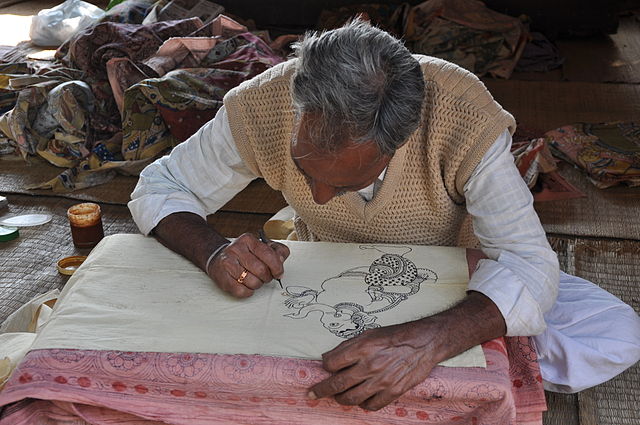










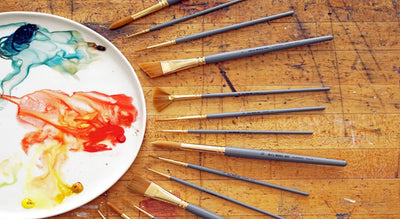
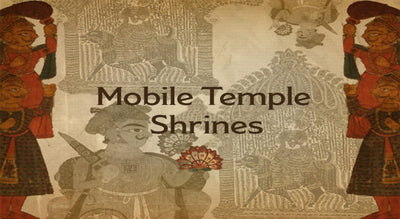
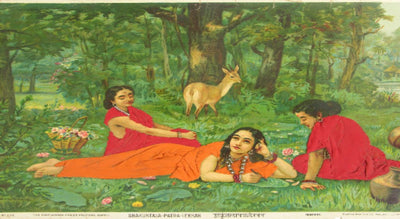
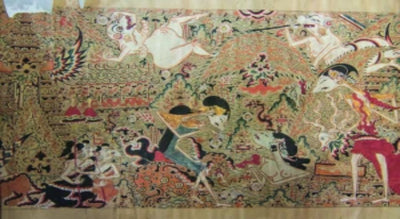
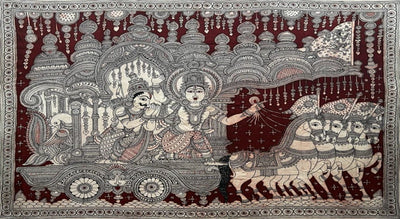
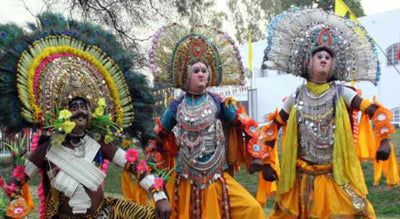
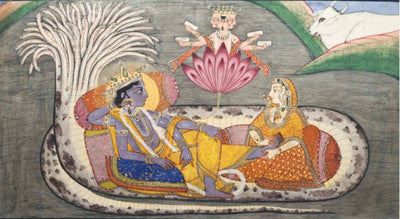
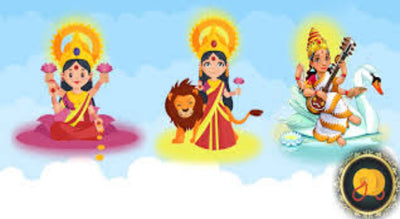
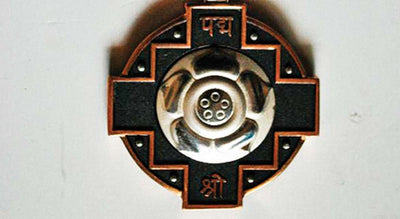
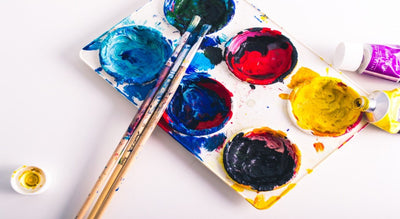
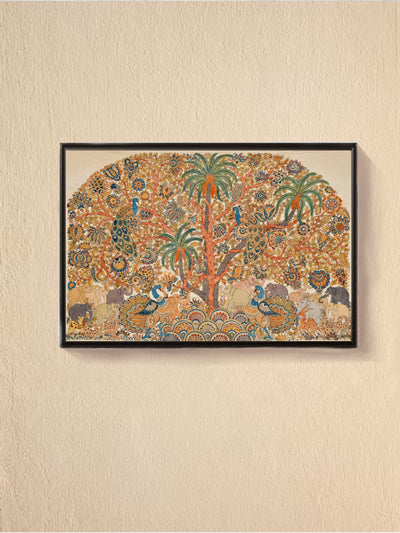







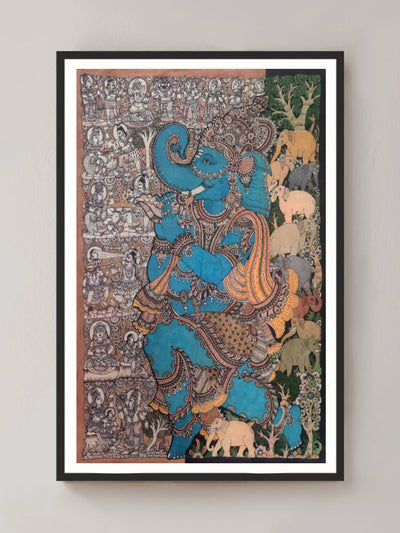








0 comments